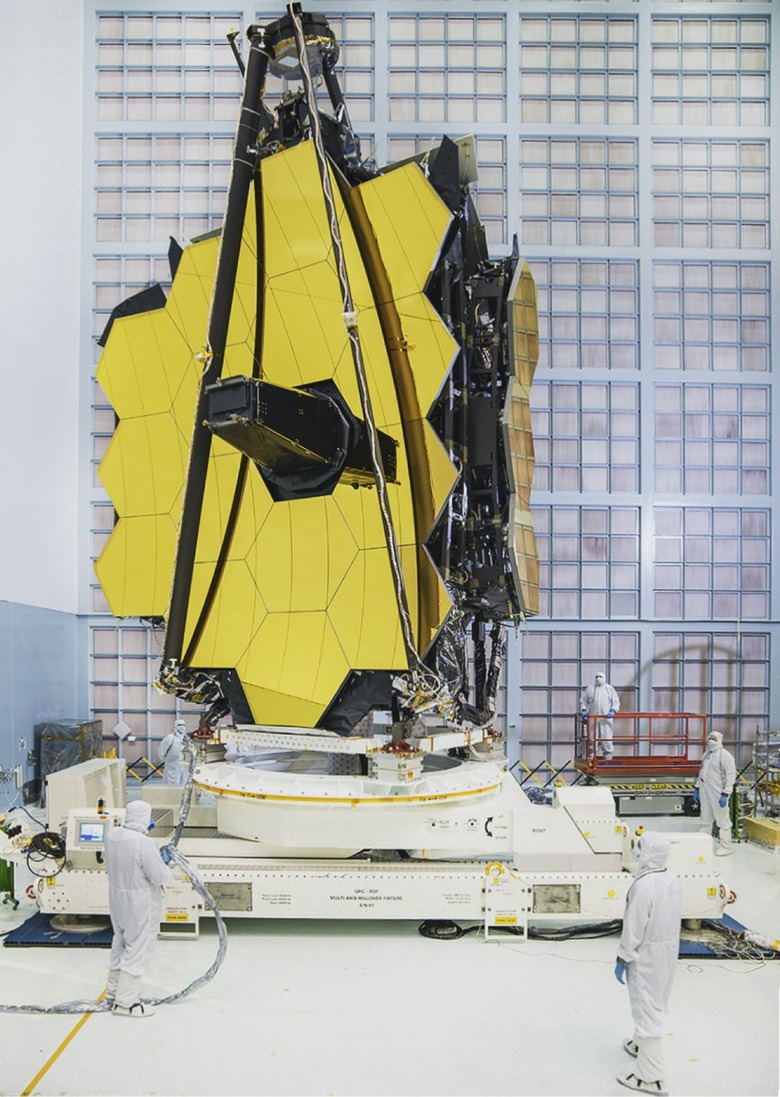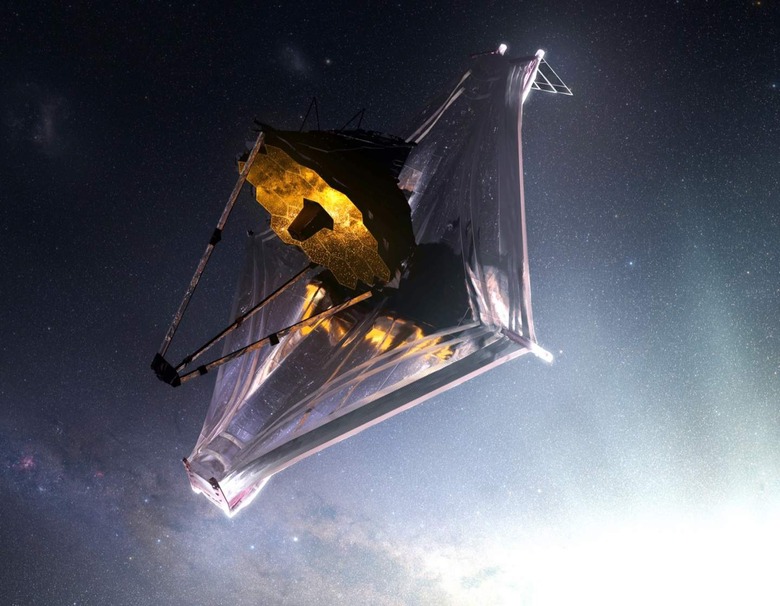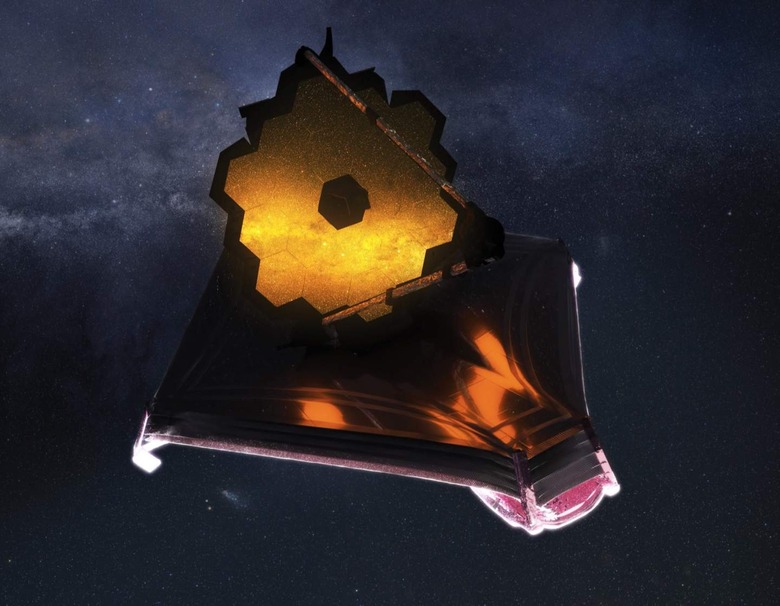Here's What Comes Next For NASA's James Webb Space Telescope
The James Webb Space Telescope has passed its final ground tests, though the biggest challenge for NASA's de-facto Hubble replacement is still ahead. What could be the most intricate example of astronomical origami so far not only promises an unprecedented view of the universe, but a bold example of how scientific imagination can figure out how to work around the practical limits of space flight.
The countdown to Webb's launch is on
It's fair to say the James Web Space Telescope hasn't had a particularly easy – or quick – journey to launch. Development first began in 1996, with a 2007 blast-off scheduled; several redesigns progressively pushed that back. A combined effort of NASA, the European Space Agency, and the Canadian Space Agency, at once point Webb was expected to cost $10 billion all-in.
After decades of work, though Webb is about ready to leave Earth.
James Webb is big, but rockets are small, and that's a problem
As with ground-based telescopes, the goal for the James Webb Space Telescope was to deliver the biggest possible primary mirror. That's what reflects long-wavelength visible light through mid-infrared light to the telescope's sensors. The bigger the mirror, the greater the sensitivity.

Hubble's primary mirror is 7 feet 10, but the James Webb mirror is a whopping 21 feet. It's made from gold-plated beryllium, designed to be ultra-reflective. Problem is, there's no rocket with a payload bay large enough to accommodate something of that size, and the spacecraft onto which it's mounted.
The answer was an elaborate folding mechanism, effectively turning James Webb's mirror into a complex origami structure. The 18 hexagonal sections can fold up, so as to just fit with an Ariane 5 launch vehicle. Currently, the telescope is in its retracted state: the next time it unfurls, it'll be in space.
A six-month umbrella opening
The launch on the Ariane 5 is expected to take about 26 minutes. After that, though, will come a six month long commissioning period, as Webb travels to its final destination. During that time, the space telescope will be multitasking.
It'll be about a month-long journey for Webb to fly almost a million miles away from Earth, to near the second Lagrange point (L2) of the Earth-Sun system. Scientists picked that spot, because the combined gravitational pull of Earth and the Sun will mean Webb orbits our star at the same rate that Earth does.

During the trip there, the complex observatory mechanism will unfurl. NASA expects to begin the sunshield deployment a few days after the launch, at which point the temperature of the telescope and other instruments will begin to drop. It won't be an uncontrolled process, either: special heaters built into Webb will allow the ground team to progressively manage the oncoming chill, so as to even out stresses across the whole assembly.
Once the sunshield – which is about the size of a tennis court – has begun to deploy, so too can the secondary mirror, and then the primary mirror. The spacecraft they're all mounted on will use its thrusters to position Webb into the appropriate orbit. Those thrusters will be called upon over the 10+ year lifespan of the telescope, to maintain its perfect position with little nudges.
It'll take months, NASA says, before not only has the observatory cooled sufficiently and stabilized, but the alignment process of the telescope overall been completed. Those final calibrations are essential: unlike was the case with Hubble, there's no possibility of astronauts visiting Webb and tweaking any glitches. Overall, it'll be about six months from launch before scientific observations can begin.
Webb promises an unparalleled view of the universe
It's easy to be blasé about the sort of imagery we already have access to, both of our solar system and home galaxy, and of the universe more broadly. What with Hubble's decades of incredible discoveries, probes that have visited Jupiter, Saturn, and beyond, and Mars rovers like Curiosity and Perseverance, we already have an unprecedented knowledge of the universe we live in.
Even so, scientists are rightly excited about just what the James Webb Space Telescope could unlock. By focusing on the near to mid-infrared spectrum, it will be able to see what are known as high redshift objects. They're much older, and more distant, than what Hubble is currently capable of seeing.

In short, Webb will be able to peer further back in the history of our universe. "The longer wavelengths enable Webb to look much closer to the beginning of time and to hunt for the unobserved formation of the first galaxies," NASA explains, "as well as to look inside dust clouds where stars and planetary systems are forming today."
It could help understand, for example, why supermassive black holes are found at the center of galaxies, and which come first. Dark matter is another area of interest, and one where Webb is expected to help figure out where it is now, and how the acceleration of the universe might help create it. NASA believes that, with the space telescope, we could be able to see wha the universe looked like as far back as a quarter of a billion years after the Big Bang, or even 100 million years after that point.
